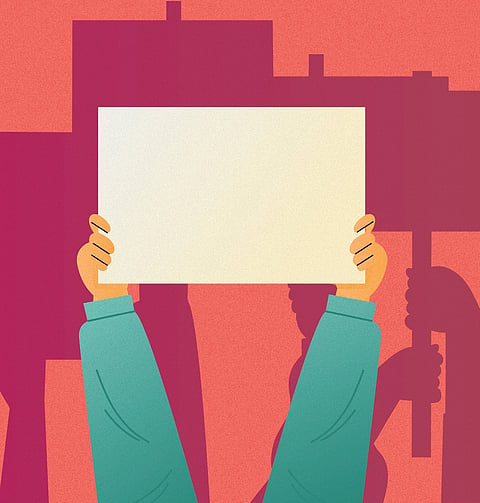

Sulking and disobeying were tactics we adopted as children to navigate our way with adults. Desperate parents succumbed to this silent blackmail and thus was accomplished many childhood desires. Not surprisingly, our land also showed a world that was weary of violent revolutions and wars what the power of non cooperation can truly achieve for a nation and its people. Our independence from colonial rule was largely attained when Indians, led by Mahatma Gandhi, simply decided to peacefully disobey. Artists have often resorted to these means to make their points. Art by itself is a powerful medium, and yet the tool of non cooperation has been cleverly used by artists to register dissent on several occasions.
A recent incident at the Venice Biennale was one such manifestation of this mode of protest. For those in the dark, the Venice Biennale is an international art exhibition, first organised in 1895 and considered to be the oldest. The main venue which has pavilions by different countries witnessed a similar protest this year when the Israeli artist and curators decided not to open their pavilion for the visitors. Ruth Patir, the artist who represented Israel at the prestigious event made use of the stage to declare that she refused to open the exhibition until hostages were released and a ceasefire was in place in Gaza. She felt that it would be ironical to talk of the vulnerability of life through the exhibition when innocent lives were being lost because of cold hearts.
Back home, artists have pulled out of various art exhibitions at many critical points in time too. When a major international art festival was organised in Gujarat, many leading Indian artists pulled out just three weeks before the show opened as a protest against censorship of art and culture by the government. This isn’t a new phenomenon that is backed by the presence of social media. Way back in 1958, the famous American painter, Mark Rothko pulled out of a very lucrative assignment as a quiet form of protest. The artist was given a public commission to paint murals for the luxurious Four Seasons Restaurant inside the Seagram corporate headquarters in Manhattan, at a time when he was still struggling as an artist.
The offer was huge and Rothko was recommended by high profile museum directors for the job. On completion of his paintings, he decided to eat at the restaurant that would soon host his artworks on its walls. It comes as no surprise that soon after his experience, he was so disgusted and proclaimed, “Anybody who will eat that kind of food for those kind of prices will never look at a painting of mine.” He soon returned the money and after years in storage, the paintings were given to a museum.
Gandhi once remarked, “Non cooperation is not a passive state; it is an intensely active state, more active than physical resistance or violence.” It is indeed heartening that his words ring true even to this day in the world of art, for not all rebellions need to make a hue and cry. We can make a difference with our quiet refusals too!
jithakarthikeyan2@gmail.com
(Jitha Karthikeyan is an artist and curator, passionate about making art accessible to the larger public)